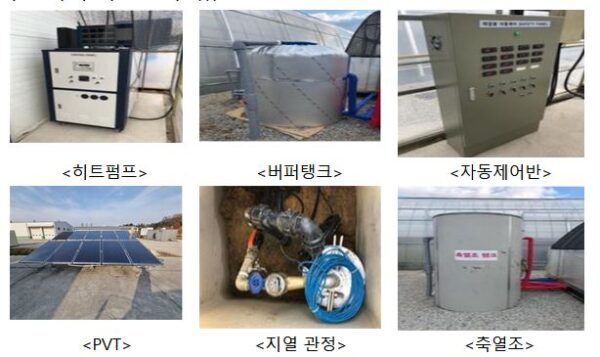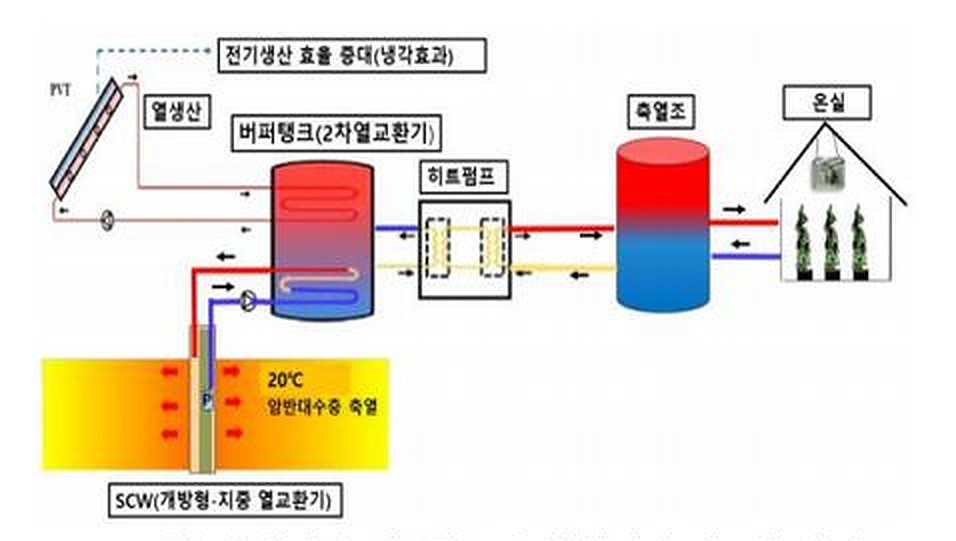A group of scientists from South Korea's Rural Development Administration, an agriculture organization under the country's Ministry of Agriculture, has created an energy system based on photovoltaic-thermal (PVT) panels and a ground-source heat pump.
The system is intended to provide cooling and heating to greenhouses.
“In Korea, geothermal energy is widely used as renewable energy for agriculture, but if geothermal heat is used for a long time, the heat source becomes insufficient,” the agency said, noting that covering around 10% of the greenhouse's roof with PVT panels may easily compensate for this typical shortcoming of geothermal energy.
The researchers said the PVT panels are able to produce hot water at temperatures ranging between 30 C and 40 C. “This is then used as a heat source for the heat pump to produce hot water at temperatures ranging from 48 C to 50 C, which is a suitable range for greenhouse heating,” they explained.
In spring, summer, and fall, when heating is not needed, the heat produced by the PV panels is sent to the groundwater layer, stored, and used to heat the greenhouse in winter.

The PVT system used in the project has an overall efficiency of 73% and is able to achieve an electricity output of 3 kW and a heat output of 7.9 kW of heat occupying a roof surface of around 18㎡. The presence of the PVT panels, according to the research group, allowed them to reduce the installed capacity of the existing geothermal system by up to 30%.
The researchers conducted an economic analysis of the system performance and found it may reduce heating and cooling costs in a greenhouse by up to 78% compared to diesel generators. They also estimated that the system may achieve a payback time of 4.4 years. “The PVT panels can increase the energy saving rate of a greenhouse by 20% compared to existing geothermal systems,” the researchers added.
The Rural Development Administration said it has applied for a patent for this technology and plans to distribute it to Korean farmers.
“The price of electricity for agricultural use is rising, putting a huge burden on farm management,” said the agency. “We are actively using new and renewable energy such as solar power, heat, and geothermal heat to reduce the costs and achieve carbon neutrality.”
This content is protected by copyright and may not be reused. If you want to cooperate with us and would like to reuse some of our content, please contact: editors@pv-magazine.com.




By submitting this form you agree to pv magazine using your data for the purposes of publishing your comment.
Your personal data will only be disclosed or otherwise transmitted to third parties for the purposes of spam filtering or if this is necessary for technical maintenance of the website. Any other transfer to third parties will not take place unless this is justified on the basis of applicable data protection regulations or if pv magazine is legally obliged to do so.
You may revoke this consent at any time with effect for the future, in which case your personal data will be deleted immediately. Otherwise, your data will be deleted if pv magazine has processed your request or the purpose of data storage is fulfilled.
Further information on data privacy can be found in our Data Protection Policy.